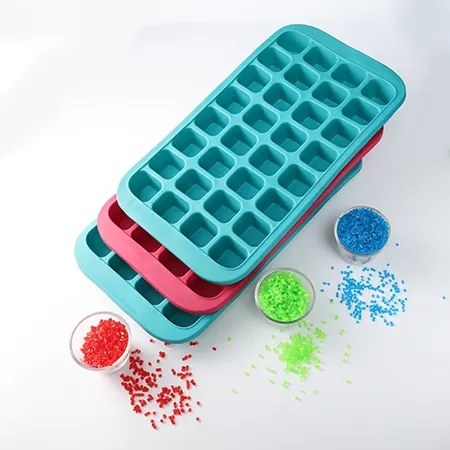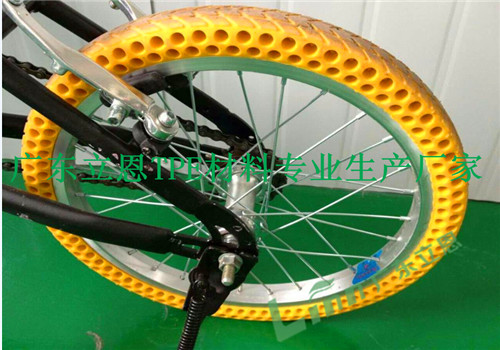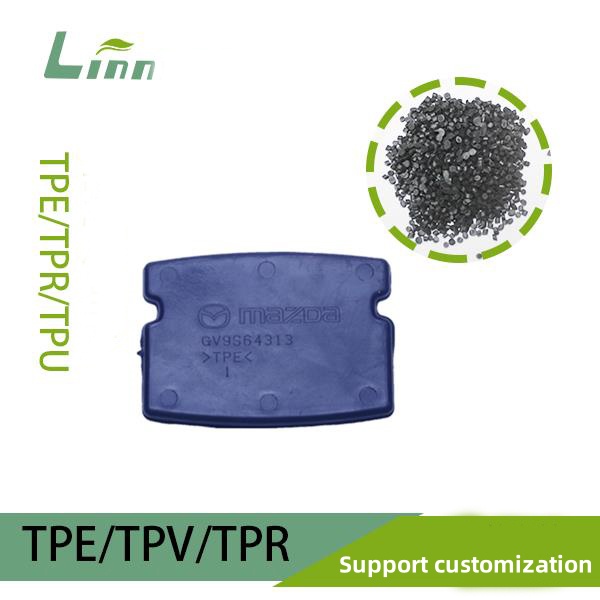In the bustling world of yoga, where every pose and breath matters, the choice of a yoga mat can significantly impact your practice. As someone who has been deeply involved in the yoga and fitness industry for years, I’ve seen firsthand how the right mat can enhance comfort, stability, and overall enjoyment during yoga sessions. Today, I’m here to guide you through the nuances of three popular yoga mat materials: TPE (Thermoplastic Elastomer), Natural Rubber, and NBR (Nitrile Butadiene Rubber). By the end of this article, you’ll have a clearer understanding of which material suits your needs best.

Understanding the Basics: What Makes a Good Yoga Mat?
Before diving into the specifics of each material, let’s quickly recap what makes a yoga mat “good.” A great yoga mat should offer:
Grip: Adequate traction to prevent slipping, especially during sweaty sessions.
Cushioning: Enough padding to support joints and provide comfort on hard surfaces.
Durability: Resistance to wear and tear, ensuring longevity.
Eco-Friendliness: Made from sustainable or recyclable materials, minimizing environmental impact.
Portability: Lightweight and easy to carry, making it convenient for travel or studio use.
Now, let’s explore how TPE, Natural Rubber, and NBR stack up against these criteria.
TPE Yoga Mats: The Modern Choice
TPE is a relatively new material in the yoga mat world, but it’s quickly gaining popularity due to its unique blend of properties.
Advantages of TPE Yoga Mats:
Eco-Friendly: TPE is often considered more environmentally friendly than traditional PVC mats because it’s recyclable and doesn’t contain harmful chemicals like phthalates or heavy metals.
Lightweight and Portable: TPE mats are typically lighter than their rubber counterparts, making them easy to carry to and from yoga classes.
Good Grip: TPE offers excellent grip, even when wet, which is crucial for maintaining stability during poses.
Affordable: Compared to some high-end natural rubber mats, TPE mats are often more budget-friendly.
Easy to Clean: TPE mats are usually easy to wipe down and maintain, resisting odors and bacteria buildup.
Potential Drawbacks:
Less Cushioning: While TPE mats provide adequate cushioning for most yogis, they may not offer the same level of support as thicker natural rubber mats, especially for those with sensitive joints.
Temperature Sensitivity: TPE can become slightly softer in warmer temperatures, which might affect grip and stability for some users.
Best For: Yogis who prioritize portability, affordability, and eco-friendliness, and who don’t require extreme cushioning.

Natural Rubber Yoga Mats: The Traditional Favorite
Natural rubber has long been a staple in the yoga mat industry, known for its superior grip, cushioning, and durability.
Advantages of Natural Rubber Yoga Mats:
Exceptional Grip: Natural rubber provides unparalleled traction, even in the sweatiest of conditions, ensuring you stay stable during every pose.
Excellent Cushioning: The thick, dense material offers superior support for joints, making it ideal for those with knee or hip issues.
Durable: Natural rubber mats are built to last, withstanding regular use and abuse without showing signs of wear.
Eco-Friendly: Made from renewable resources, natural rubber mats are a sustainable choice for environmentally conscious yogis.
Biodegradable: At the end of their lifecycle, natural rubber mats can decompose, minimizing waste.
Potential Drawbacks:
Heavier: Natural rubber mats are typically heavier than TPE or NBR mats, which might be a concern for those who need to carry their mat frequently.
Price: High-quality natural rubber mats can be more expensive than other options, especially if they’re made from organic or sustainably sourced rubber.
Allergies: Some individuals may be allergic to natural rubber latex, which could cause skin irritation or other allergic reactions.
Best For: Yogis who prioritize grip, cushioning, and durability, and who don’t mind the extra weight or higher price tag. Also suitable for those with joint issues who need extra support.

NBR Yoga Mats: The Budget-Friendly Option
NBR is a synthetic rubber material that offers a cost-effective alternative to natural rubber and TPE mats.
Advantages of NBR Yoga Mats:
Affordable: NBR mats are often the most budget-friendly option, making them accessible to yogis on a tight budget.
Good Cushioning: Despite their lower price, NBR mats typically offer decent cushioning, providing some support for joints during practice.
Lightweight: NBR mats are usually lighter than natural rubber mats, making them easier to carry.
Variety of Colors and Designs: NBR mats come in a wide range of colors and designs, allowing you to express your personal style.
Potential Drawbacks:
Poor Grip: NBR mats tend to have less grip than TPE or natural rubber mats, especially when wet, which could lead to slipping during poses.
Less Durable: NBR mats may not last as long as other materials, showing signs of wear and tear more quickly with regular use.
Environmental Impact: NBR is a synthetic material, and its production may have a higher environmental impact compared to natural rubber or TPE.
Best For: Yogis who are on a tight budget and need a basic mat for occasional use or for beginners who are still exploring their yoga practice.
Comparative Analysis: TPE vs. Natural Rubber vs. NBR
To help you better understand the differences between these three materials, here’s a comparative analysis table:
| Material | Grip | Cushioning | Durability | Eco-Friendliness | Price | Best For |
|---|---|---|---|---|---|---|
| TPE | Good | Moderate | Good | High (recyclable) | Moderate | Portability, affordability, eco-friendliness |
| Natural Rubber | Excellent | Excellent | Excellent | High (renewable) | High | Grip, cushioning, durability |
| NBR | Poor | Moderate | Moderate | Low (synthetic) | Low | Budget-conscious, beginners |
Key Takeaways from the Table:
TPE offers a good balance of grip, cushioning, and eco-friendliness at a moderate price point, making it a versatile choice for many yogis.
Natural Rubber excels in grip, cushioning, and durability but comes at a higher price and may be heavier, making it ideal for serious yogis who prioritize performance.
NBR is the most budget-friendly option but may lack in grip and durability compared to the other materials, making it suitable for occasional use or beginners.

Choosing the Right Yoga Mat for Your Practice
Selecting the right yoga mat depends on several factors, including your practice style, budget, environmental concerns, and personal preferences. Here are some tips to help you make an informed decision:
Consider Your Practice Style: If you practice hot yoga or tend to sweat a lot, prioritize a mat with excellent grip, like natural rubber or TPE. If you’re a beginner or practice occasionally, an NBR mat might suffice.
Think About Your Budget: Determine how much you’re willing to spend on a yoga mat. While natural rubber mats offer superior performance, they can be more expensive. TPE mats offer a good balance of performance and affordability, while NBR mats are the most budget-friendly.
Consider Environmental Impact: If you’re environmentally conscious, look for mats made from sustainable or recyclable materials, like TPE or natural rubber. Avoid mats made from synthetic materials like NBR if possible.
Personal Preferences: Consider factors like thickness, texture, and color when choosing a yoga mat. Some yogis prefer a thicker mat for extra cushioning, while others prefer a thinner mat for better stability. Experiment with different textures and colors to find what feels best for you.
Test Before You Buy: If possible, try out different mats in person before making a purchase. This will give you a better sense of how each mat feels under your hands and feet and how it performs during different poses.
Real-World Examples and User Feedback
To illustrate the practical applications of these materials, let’s look at some real-world examples and user feedback.
Example 1: The Yogi Who Prioritizes Portability
A busy professional who practices yoga in the mornings before work and at the studio on weekends was looking for a lightweight, easy-to-carry mat. They opted for a TPE yoga mat due to its lightweight design and excellent grip. The mat has become their go-to choice for both home and studio practice, offering the perfect balance of portability and performance.
Example 2: The Serious Yogi Who Needs Extra Support
A seasoned yogi with knee issues was looking for a mat that offered superior cushioning and grip. They chose a natural rubber yoga mat and have been thrilled with its performance. The mat provides the extra support they need during poses, and the excellent grip ensures they stay stable even in the sweatiest of conditions.

Example 3: The Beginner on a Budget
A college student who was new to yoga was looking for an affordable mat to get started. They opted for an NBR yoga mat and found it to be a great introduction to the practice. While the mat may not offer the same level of grip or durability as more expensive options, it has been sufficient for their occasional home practice.
Maintenance and Care Tips for Your Yoga Mat
Regardless of the material you choose, proper maintenance and care are essential to ensure your yoga mat lasts as long as possible and performs at its best.
Maintenance Tips:
Clean Regularly: Wipe down your mat with a damp cloth or yoga mat cleaner after each use to remove sweat, dirt, and bacteria.
Air Dry: Allow your mat to air dry completely before rolling it up to prevent mold and mildew growth.
Avoid Direct Sunlight: Prolonged exposure to direct sunlight can damage the material and cause fading.
Store Properly: Roll your mat loosely with the top side facing out to prevent creases and maintain its shape.
Additional Tips for Specific Materials:
TPE Mats: Avoid using harsh chemicals or abrasive cleaners, as they can damage the material.
Natural Rubber Mats: Be aware that natural rubber may have a slight odor initially, which should dissipate over time. Avoid exposing the mat to extreme temperatures, as this can affect its performance.
NBR Mats: While NBR mats are more resistant to wear and tear than some other materials, they may still show signs of aging over time. Consider replacing your NBR mat if it becomes excessively worn or loses its grip.
Future Trends in Yoga Mat Materials
As the yoga industry continues to evolve, we can expect to see several exciting developments in yoga mat materials.
Innovative Blends: Manufacturers are experimenting with blends of different materials to create mats that offer the best of both worlds in terms of grip, cushioning, and durability.
Sustainable Materials: There’s a growing trend towards using more sustainable and eco-friendly materials in yoga mat production, such as cork, jute, and recycled rubber.
Smart Mats: Some companies are developing “smart” yoga mats that integrate technology to track your practice, provide feedback, and even connect to apps for a more personalized experience.
Customization: With the rise of 3D printing and other advanced manufacturing techniques, we may see more opportunities for yogis to customize their mats with unique designs, textures, and features.

Conclusion: Finding Your Perfect Yoga Mat
In conclusion, choosing the right yoga mat is a personal decision that depends on your practice style, budget, environmental concerns, and personal preferences. By understanding the differences between TPE, natural rubber, and NBR mats, you can make an informed decision that enhances your yoga practice and brings you closer to your goals.
Whether you opt for a TPE mat for its portability and eco-friendliness, a natural rubber mat for its superior grip and cushioning, or an NBR mat for its affordability, remember that the most important thing is to find a mat that feels good under your hands and feet and supports your practice in every way.
Related Questions and Answers
Q1: Can I use a yoga mat for other types of exercise?
A1: Yes, many yoga mats can also be used for other types of exercise, such as Pilates, stretching, or bodyweight workouts. However, it’s important to choose a mat that offers the right level of grip and cushioning for your specific needs.
Q2: How often should I replace my yoga mat?
A2: The lifespan of a yoga mat depends on several factors, including the material, frequency of use, and how well it’s maintained. Generally, you should consider replacing your mat if it becomes excessively worn, loses its grip, or develops an odor that can’t be removed with cleaning.

Q3: Are there any alternatives to traditional yoga mats?
A3: Yes, there are several alternatives to traditional yoga mats, including cork mats, jute mats, and even towels or blankets for certain types of practice. However, it’s important to choose an alternative that offers the right level of grip and cushioning for your needs.
Q4: Can I customize my yoga mat?
A4: Some manufacturers offer customization options for their yoga mats, allowing you to choose from a variety of colors, designs, and even add your name or logo. However, customization options may vary depending on the brand and material.
Q5: How do I clean a yoga mat with natural rubber?
A5: To clean a natural rubber yoga mat, use a damp cloth or yoga mat cleaner specifically designed for natural rubber. Avoid using harsh chemicals or abrasive cleaners, as they can damage the material. Allow the mat to air dry completely before rolling it up.





